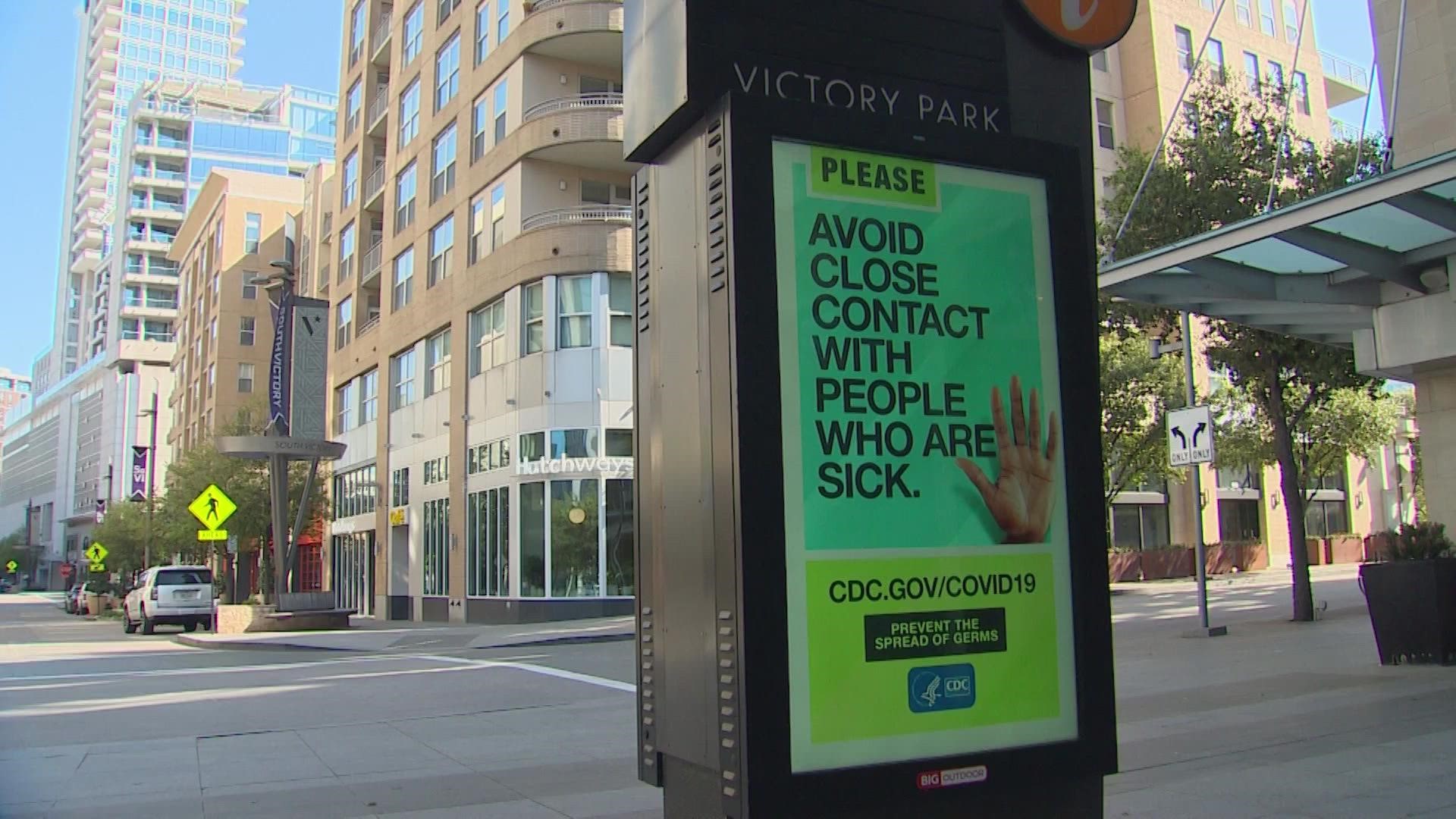DALLAS — It’s been two and a half years since COVID-19 shut down the country, and it’s still in the front of many Americans’ lives.
But, that may be changing even as cases have surged.
“It’s going to be with us for the long-term like flu is with us for the long-term,” said Dr. James McDeavitt, the vice president and dean of clinical affairs at Baylor College of Medicine.
McDeavitt believes COVID is moving into a new endemic stage and may already be there. With at-home testing results rarely, if ever, being reported to health officials, he’s looking at wastewater surveillance which is now set up across the country as well as hospitalizations as a gauge of spread.
Both have risen but lately leveled off.
“The case rate numbers are incredibly unreliable now,” McDeavitt said. “We really haven’t seen the death rate increase and we haven’t seen hospitalizations increase to the same extent.”
He says 99% of ICU COVID patients at the hospital are unvaccinated. The Dallas-Fort Worth Hospital Council estimated around 85% of COVID patients overall are unvaccinated. Treatments like Paxlovid are effective and widely available, but the disease likely isn’t going away.
“I think for the foreseeable future, we’re going to be chasing it to a degree,” McDeavitt said.
That doesn’t mean it has to dominate life, though. Flu kills between 20,000 and 80,000 Americans a year. McDeavitt expects COVID to settle in around 100,000 deaths per year and remain a top-ten cause of death in the country.
“It’s going to be a significant public health problem for some time to come,” he said. “We need to still think about the most vulnerable in our populations and help to protect them.”
For the first time since the first COVID case was reported, a school year begins with every student and teacher able to be vaccinated, though many still aren’t.
“I’m very concerned the way this new variant, the BA.5, continues to spread that once kids get back and cluster in school, we’re going to see another increase,” Dr. David Winter at Baylor Scott & White said. “Only half of kids are vaccinated so I think parents should consider that.”
The current TEA guidance is for kids with symptoms must wait at least five days since they started, have symptoms improving and be fever free. Students who test positive but don’t have symptoms must wait five days since the positive test.
“I think we’ve moved into a phase of the pandemic where this is largely about managing individual risk,” McDeavitt said. “For sort of the rank and file people, get vaccinated, be careful, if you get sick, don’t expose other people.”
The current variant is more contagious and less severe, but there’s no promise that won’t change in the future.
Two and a half years later, COVID still dictates life, but before long, it’ll become just another part of it.

